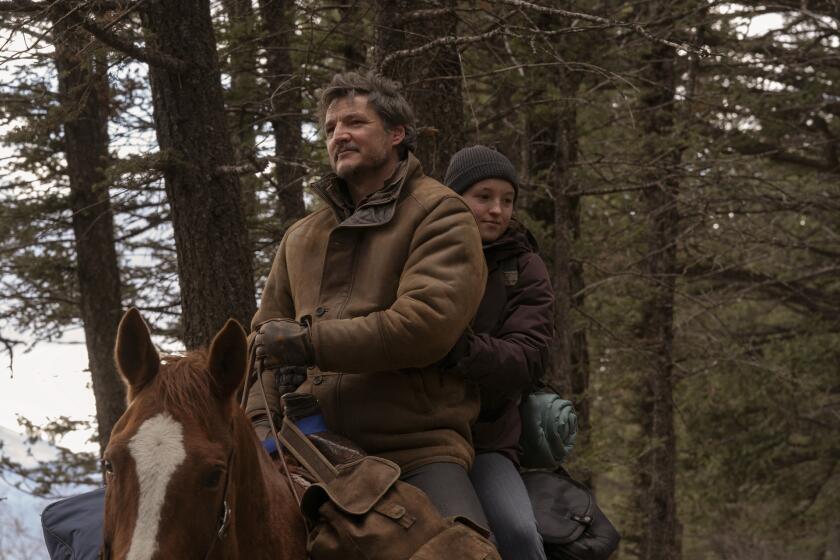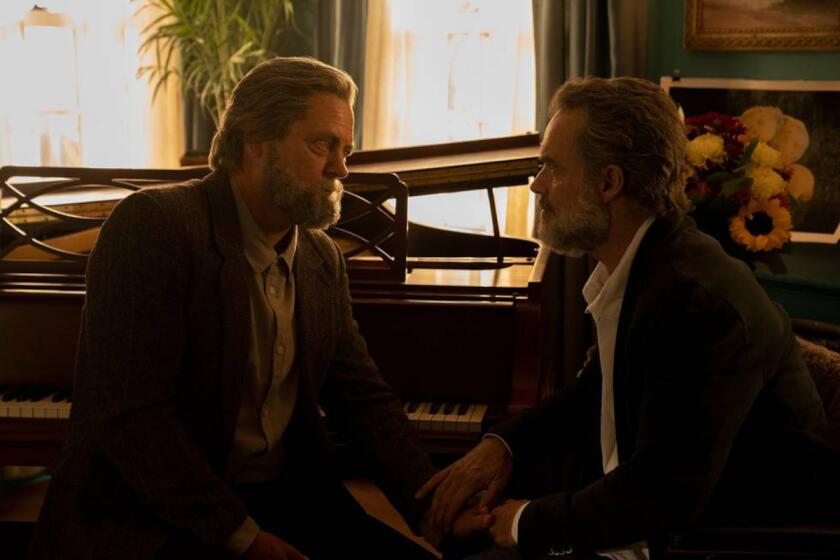How to create the crumbling beauty of ‘The Last of Us’? Build it and then trash it
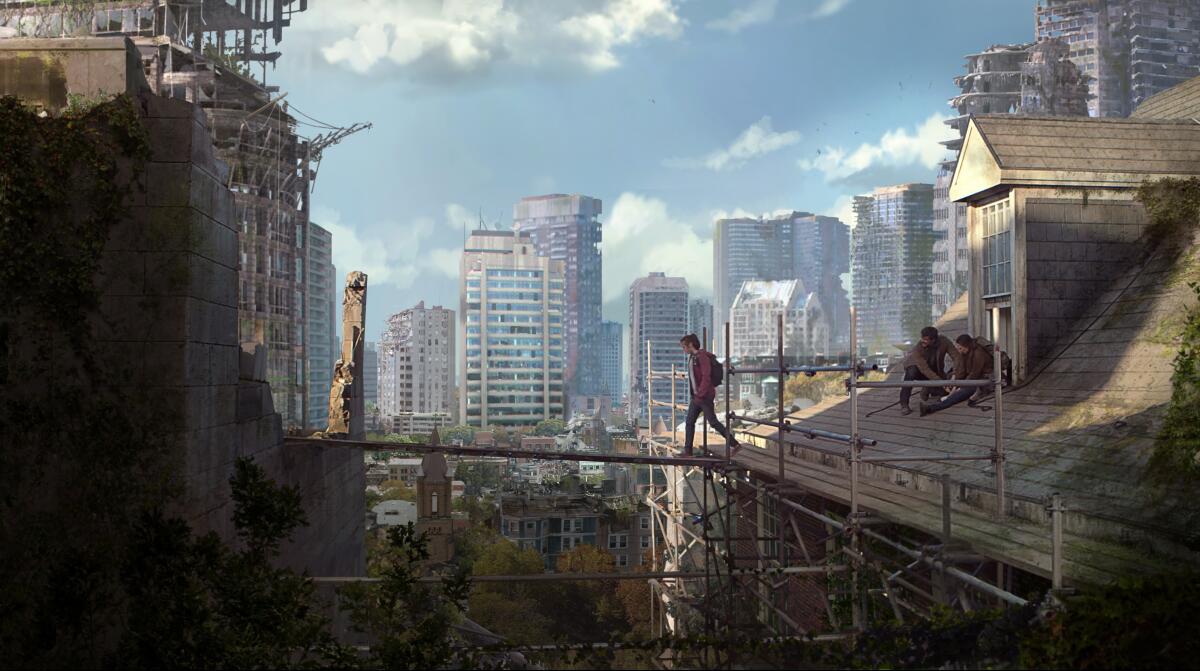
- Share via
There’s a German photographer named Michael Wolf who lived on the small Hong Kong island of Cheung Chau until his passing in 2019. He published more than a dozen books documenting the bespoke culture of big cities. One particular series called “bastard chairs” photographed the resourcefulness of Chinese people who created or repaired chairs using secondary materials.
Broken legs were replaced by bricks or buckets and seats re-covered with fabric and string. For production designer John Paino, the photographs became a guiding light in creating the postapocalyptic settings for “The Last of Us,” a gripping survival saga that earned 24 Emmy nominations — including for Paino’s work alongside art director Don Macaulay and set decorator Paul Healy.
“We had this idea that anything and everything is going to be reused,” Paino says about the show’s world that’s been overtaken by a human-infecting fungus. “There’s no going to a store or anywhere to get anything. That became a theme of the show and a key image we tried to put everywhere.”
Adapted from the popular video game by its architect Neil Druckmann and co-created by Craig Mazin (“Chernobyl”), the nine-episode season follows Joel (Pedro Pascal), a broken father, and Ellie (Bella Ramsey), the orphaned girl who may be the answer to a cure, traveling west from Boston. In their way is a decaying hellscape of imminent danger at every turn.
HBO’s drama expands a beloved video game into a series that appeases longtime fans and appeals to new viewers. Here’s how ‘The Last of Us’ pulled it off.
Paino realized almost everything on location would need to be built from scratch when he started planning the Boston Quarantine Zone (QZ) where we find Joel 20 years after the initial outbreak. The reason: Canada, which stood in for the locations, doesn’t have much in the way of abandoned buildings. Not only did he and the team need to make everything themselves, they then needed to break it down to feel aged and repaired. A derelict state was the constant goal.
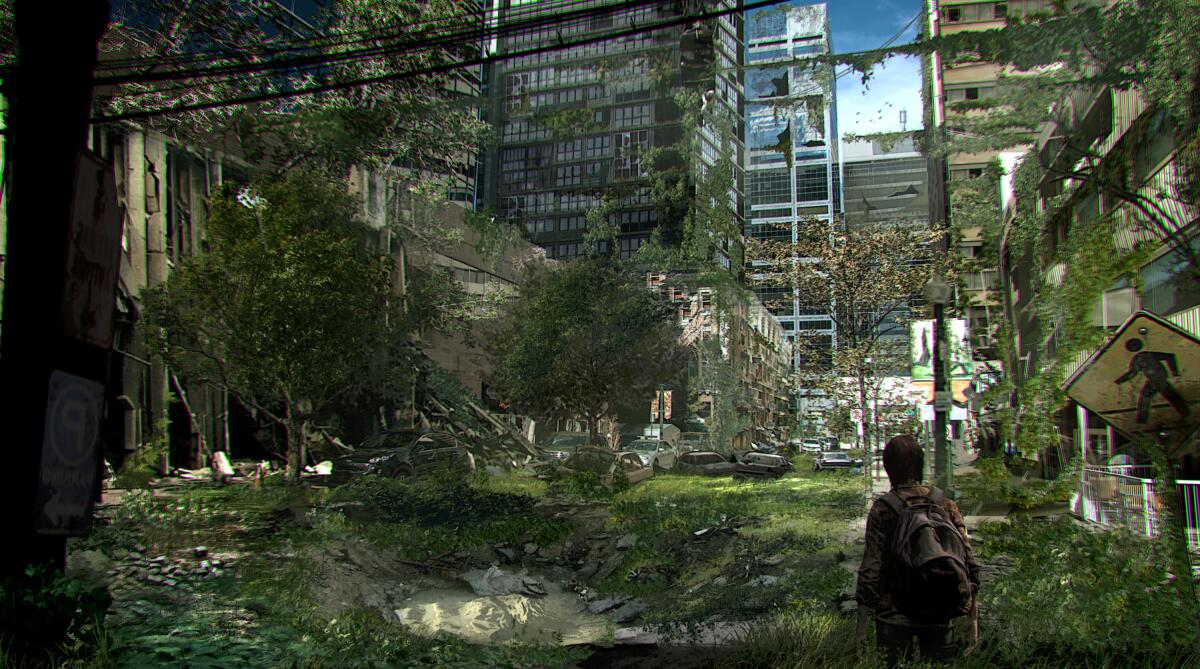
The production designer also subliminally shifted the color palette as Joel and his partner Tess (Anna Torv) smuggle Ellie out of the QZ. Muddier hues give way to lusher colors as they go deeper into the abandoned streets of Boston. “They certainly don’t have anything decorative [in the QZ] so when Ellie is out in nature, we are introducing greens and introducing natural colors. But she doesn’t realize the danger of it all, too.”
Interiors were given additional attention outside the Boston QZ, especially at a luxury hotel that’s been flooded with greenery. “Everything has been decimated for 20 years, and nature has gone through, but there’s a remnant of bright colors,” Paino says. “We painted everything quite brightly and then knocked [the color] down.”
Paino continued to face a number of hurdles in Episodes 4 and 5 where he created a Kansas City QZ, constructed a passageway of underground tunnels and a cul-de-sac of dilapidated houses, where in a climactic zombie-fest sequence, a truck explodes and falls through the collapsing ground, unearthing a mob of the infected. Joel and Ellie are in a fight for their lives.

Parts of downtown Calgary were dressed 20 feet up from the ground to stand in for the Kansas City outskirts. A local brewery was used for the underground settlement for its basement storage rooms and tunnels. It’s here Joel and Ellie find comfort with Henry (Lamar Johnson) and Sam (Keivonn Woodard), who are helping them to escape the city. To dress the area, Paino added doors, a number of walls and venting above that allowed light and water to find its way down. Other parts of the settlement were built on stage. Everything was distressed and aged to detail. The painted murals in the schoolroom where Ellie and Sam play show growing trees and blooming flowers, and people holding hands — it’s a Crayola box of color. “We certainly wanted it to resemble the [video] game, but we made it more colorful,” Paino says. “The game is our bible, but we are embellishing and enlarging the scope of it.”
But not everything was built from scratch. A town near Waterton Lakes National Park about 160 miles south of Calgary stood in for the survivalist camp in snow-blanked Colorado. It’s in Episode 8 where Ellie tries to protect an injured Joel and gets captured by the town’s leader with an ugly secret. “Few people live in Waterton during the winter, because it’s so harsh,” Paino notes. That allowed them to re-dress the exterior of an existing steakhouse and a canoe supply store that stowed several of the camp’s dead bodies. However, the interior of the steakhouse, its kitchen and back area were built from the ground up. Paino took design cues from the game and his own experience working at a steakhouse. “I wanted it to feel like a steakhouse, winter cabin and church all in one,” he says. The reddish carpet color added to the macabre scenario, and Paino patterned the game’s logo on top of it as an Easter egg.
Nick Offerman and Murray Bartlett — as distinct in real life as their characters — on playing the melancholy romance of Bill and Frank.
The series finale, “Look for the Light,” echoes one of the game’s most iconic moments — when Joel and Ellie stumble upon a free-roaming giraffe in what remains of Salt Lake City and feed it. It’s a sign of hope and innocence. After everything, Ellie is still just a kid in awe, and it allows Joel to seemingly reconnect as a parent.
Production looked to the Calgary Zoo and its giraffes to bring the heartwarming sequence together. Several weeks prior to shooting, blue screen walls were slowly introduced into the giraffe enclosure to acclimate them. Then Pascal and Ramsey would stop by frequently to feed them. It was a male Masai giraffe named Nabo who stole the show, making friends with the two smiling survivors.
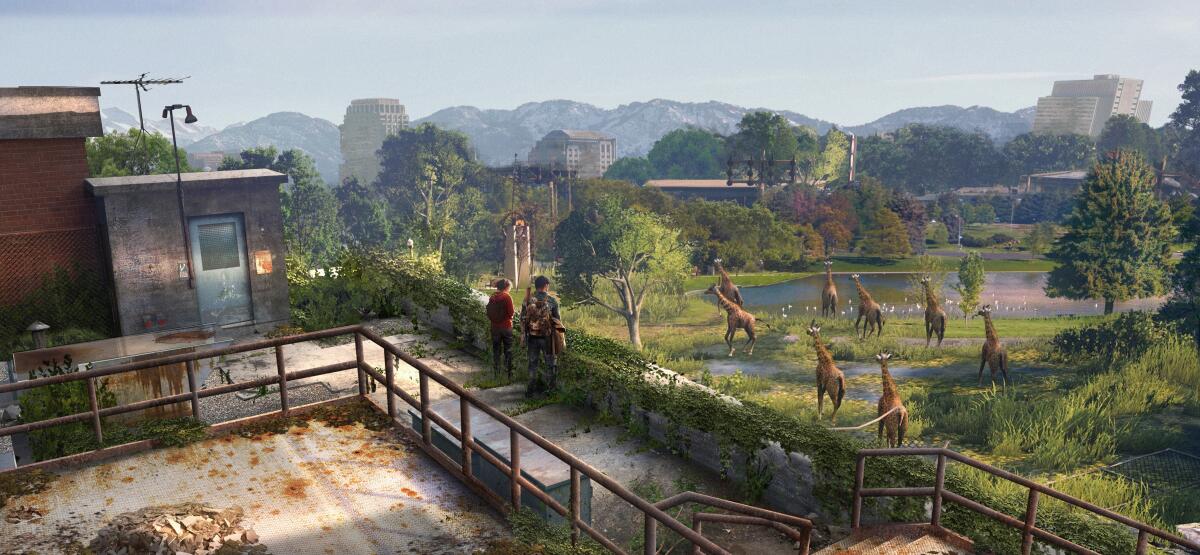
The area leading up to the enclosure and beyond was a combination of practical locations and set builds. The only CGI used in the moment was replacing the blue screen walls with an overgrown city backdrop. As Joel and Ellie walk farther onto the roof, they overlook a panorama of downtown to see a group of grazing giraffes — a glowing hint of change that may come. Season 2 is already in the works — be ready with your broken-down chairs.
More to Read
From the Oscars to the Emmys.
Get the Envelope newsletter for exclusive awards season coverage, behind-the-scenes stories from the Envelope podcast and columnist Glenn Whipp’s must-read analysis.
You may occasionally receive promotional content from the Los Angeles Times.
